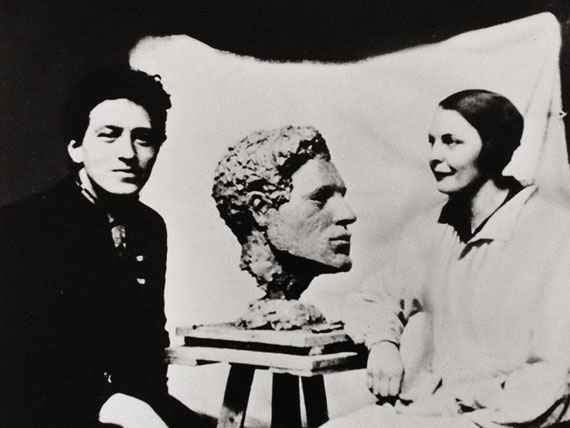
Women of Venice
Carol Bove » Teresa Hubbard / Alexander Birchler »
Exhibition: 13 May – 26 Nov 2017
Fri 12 May 16:30
Curator Philipp Kaiser has invited artists Carol Bove and Teresa Hubbard / Alexander Birchler to show their work in the exhibition Women of Venice at the Pavilion of Switzerland. With the project Kaiser aims to explore Alberto Giacometti’s absence in the history of the Swiss Pavilion. During his lifetime, Giacometti declined all requests for him to exhibit his work there.
Women of Venice refers to the little known absence of Alberto Giacometti from the Swiss Pavilion at the Venice Biennale. Set in the Pavilion of Switzerland, which was built in 1952 by Alberto’s brother, the renowned architect Bruno Giacometti, it features new work by Carol Bove and Teresa Hubbard / Alexander Birchler created specifically for the Biennale Arte 2017 in reference to the legacy and universe of Alberto Giacometti. Philipp Kaiser, nominated as curator of the Swiss Pavilion by the Swiss Arts Council Pro Helvetia, outlines his concept as follows: "The exhibition Women of Venice aims to reflect on the history of the Pavilion and Switzerland’s contributions to the Venice Biennale from a contemporary perspective, and to initiate new work, specific to this context." With the exhibition, Kaiser intends to explore concepts of national identity as well as issues of cultural policy.
Teresa Hubbard / Alexander Birchler present their film installation Flora, based on discoveries made in the course of their research on the largely unknown American artist Flora Mayo who studied in Paris in the 1920s, at the same time as Giacometti, and who was his lover. They use a documentary approach to delve into the archaeology of film in their work and weave together fictional and documentary material to reconstruct and re-imagine life and work of Flora Mayo, also giving voice to her previously unknown son. Giacometti’s and Mayo’s relationship and their ensuing portrait busts reflect the creative energy generated by their collaborative artistic activity and also shed light on Alberto Giacometti’s early life. The film installation also reflects on the artist couple Hubbard and Birchler, an American-Swiss couple themselves, and their collaborative artistic activity.
Carol Bove represents the second artistic position featured at the Swiss Pavilion. The Geneva-born American artist’s work raises issues of theatricality and autonomy. For the Swiss Pavilion exhibition, Bove takes Giacometti’s figurative constellations as a starting point, tracing their relational forces. As a response to Alberto Giacometti’s historic absence from the Swiss Pavilion, she creates a new group of seven sculptures presented in the courtyard of the Swiss Pavilion referring to the artist’s late figurative work. Bove is interested in how the verticality and physicality of Giacometti’s figures explore the essence of sculpture. Her seven new works engage sculptural vocabularies through both material specificity and eclecticism, loosely referencing some of Giacometti’s well-known figural groupings such as "Forest" and "Femmes de Venise." In conversation with these, two additional sculptures by Bove voluminously occupy the sculpture hall and address the notion of presence in correspondence with their architectural surroundings.
Alberto Giacometti is without doubt one of the most influential Swiss artists of the 20th century. This makes his absence from the Venice Biennale all the more surprising. Giacometti, who lived in Paris, was repeatedly requested to represent Switzerland in Venice—a request that the artist regularly declined. From an early age, Alberto Giacometti, who was born in Borgonovo in the Canton of Grisons, saw himself as an international artist and refused to be defined through a national identity. Even when his brother, the architect Bruno Giacometti, built the new Swiss Pavilion in 1952 and Alberto was asked to show there, he graciously turned the invitation down and suggested another artist instead. In 1956, he finally consented to put on display a group of plaster figures entitled "Femme de Venise" in the French Pavilion. As a form of international recognition for his oeuvre, he was awarded the Grand Prix for Sculpture in Venice in 1962, a few years before his death.�